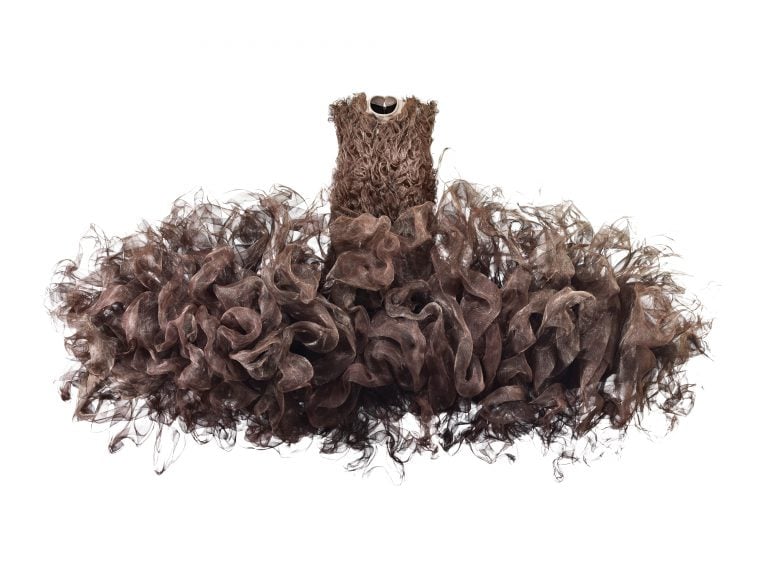Opinion
Iris van Herpen’s ‘Smoke’ Dress Yields an Image of Our Industrial Past
THE DAILY PIC: At the Carnegie Museum, van Herpen is mostly futuristic but sometimes looks back.

THE DAILY PIC: At the Carnegie Museum, van Herpen is mostly futuristic but sometimes looks back.

Blake Gopnik

THE DAILY PIC (#1736): This is a 2008 dress called Refinery Smoke by the experimental Dutch designer Iris van Herpen. She has a huge solo show up now at the Carnegie Museum of Art in Pittsburgh, and it made me happy, as it always does, to see a serious designer shown in a full-blown art context.
I have to admit, however, that I found way too many of her pieces “futuristic”—and as soon as that word can apply, it means that we’re dealing with an established, old-time idea about what the cutting edge out to look like. A lot of van Herpen’s pieces would have felt perfectly at home on a runway in the late 1960s, the last time a properly Jetsonian future was in fashion. Van Herpen has impressive new technology to render her vision of what is to come, but the vision is mostly unchanged from the days of the Space Race.
That’s why I’m so fond of “Refinery Smoke.” It’s one of the least technologized of her pieces—the metal gauze it’s made of has been around for a while. As its title indicates, it also has real leverage on the world as it is, flaws and all.
I assume that van Helpern didn’t know, back in 2008, that she’d be having an exhibition in the American rust belt. But this piece makes it feel as though she did. A few decades ago, Pittsburgh’s smokes were legendary. One old timer there told me that a blouse didn’t even stay white for one day when the factories were belching their best. At our current Trumpian moment, the question is whether Americans should read a dress like van Helpern’s in terms of nostalgia for those days of heavy industry, or pleasure at their passing. (Groninger Museum collection; photo by Bart Oomes, No. 6 Studios)
For a full survey of past Daily Pics visit blakegopnik.com/archive.